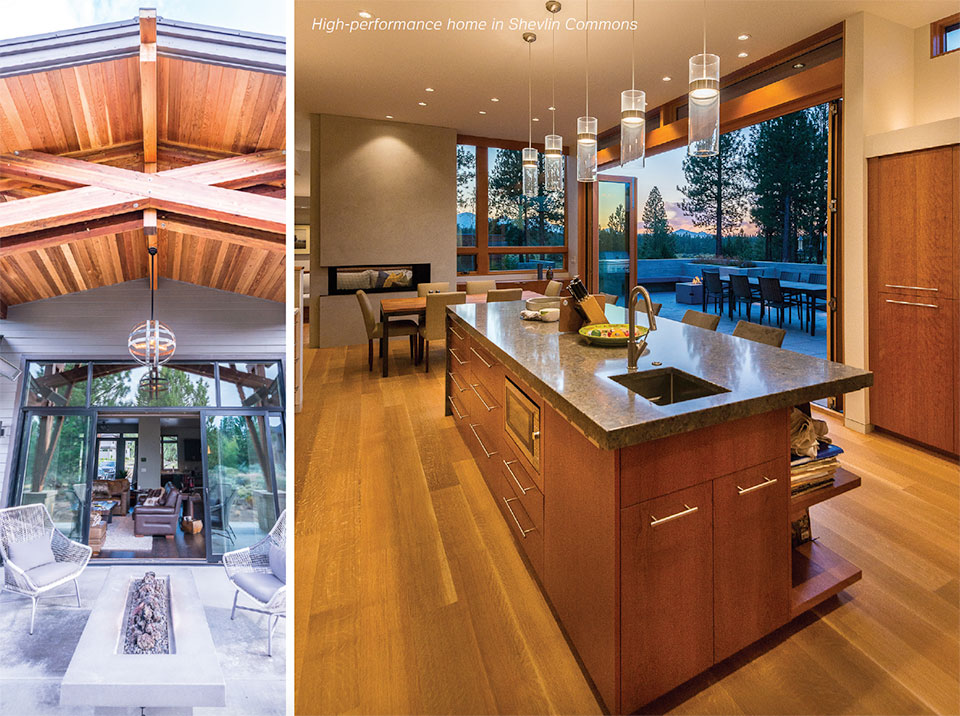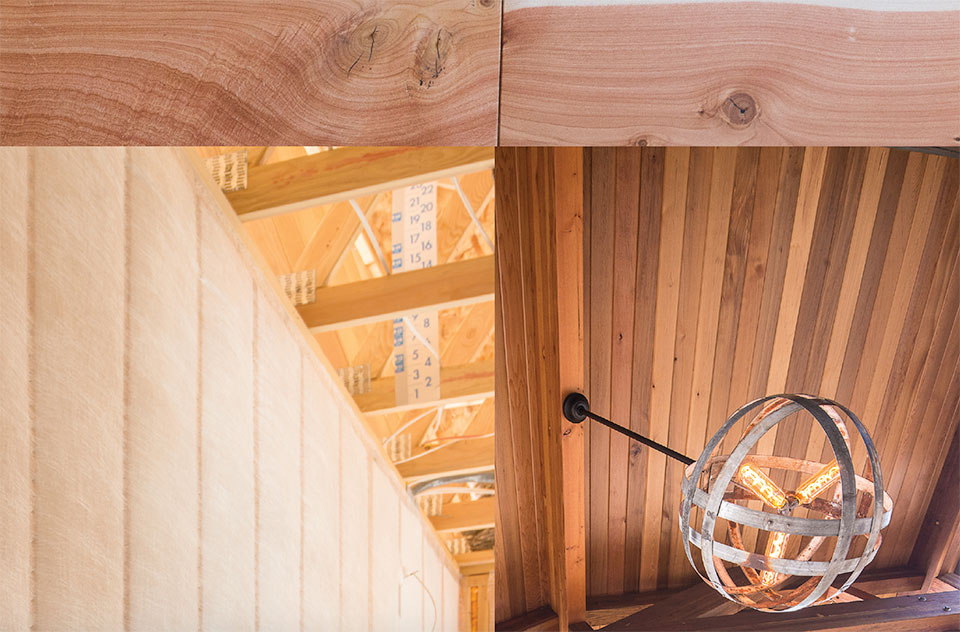The home’s interaction with its environment sits at the root of building science. It becomes an extension of its place, and must respond appropriately to provide healthy, comfortable living conditions. This extends beyond heating, cooling, moisture control, and ventilation to the greater ecosystem it is part of and the practices employed in its construction. Sustainable Northwest Wood is dedicated to sustainable forestry practices and local materials that tie the home into a thoughtful system that works to sustain both local economies and the forests that support them. Energy Conservation Insulation emphasizes healthy insulation materials and communication amongst trades to support homes that function to meet their clients’ specific goals. Dream Home Building and Design brings it all into play as a team effort that innovatively combines green building and a complete design-build process for longevity in all aspects. With the technology available to make any home perform well, the opportunity arises to do so with a conscientious approach that integrates home performance with the health of the environment and its inhabitants.
Sustainable Northwest Wood
Making the Good Choice the Easy Choice
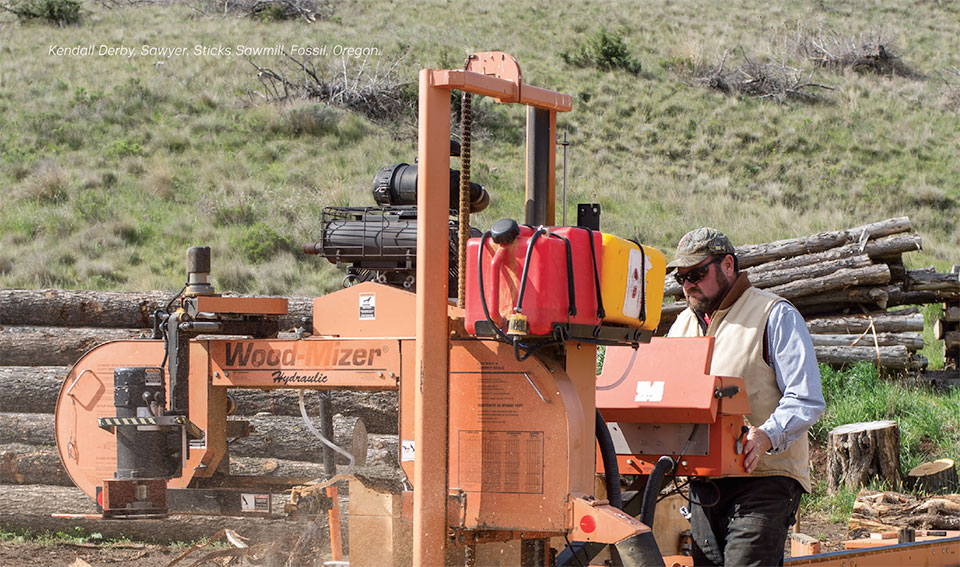
While green building and locally-sourced materials have become more popular in the past decade, the supply chains to support that market have not always been in place. Sustainable Northwest Wood closes this gap. Ryan Temple, President, shares the challenge that inspired the firm’s inception. “There has always been a great network of sawmills, but no entity in–between for a contractor or homeowner to make a purchase. No one was stocking or milling into finish products,” shares Temple. Sustainable Northwest Wood’s namesake speaks to its mission, from the macro scale all the way down to the finish details in the home, providing a source for sustainably sourced wood.
Sustainable forestry, for economies & ecosystems
Sustainable Northwest Wood sources all of its products from the Pacific Northwest—Northern California, Oregon, Washington—offering the opportunity to showcase local species and maintain strong connections with the mills and sawyers that produce the wood. “From loggers to sawmills to truckers, this all happens within 300 miles,” shares Temple. The depth to which this supply chain trickles down is an integral part of the company’s commitment to sustainability in all senses. “We’re proud that this keeps living-wage jobs in the smaller towns. While there’s a boom in the bigger cities right now, places like Dayville, Fossil, and La Pine aren’t always the beneficiary of economic good times, and growing this industry creates opportunity in those places,” Temple adds. In addition to supporting small economies, investing in local products also keeps the carbon footprint of transportation much lower than products from farther afield.
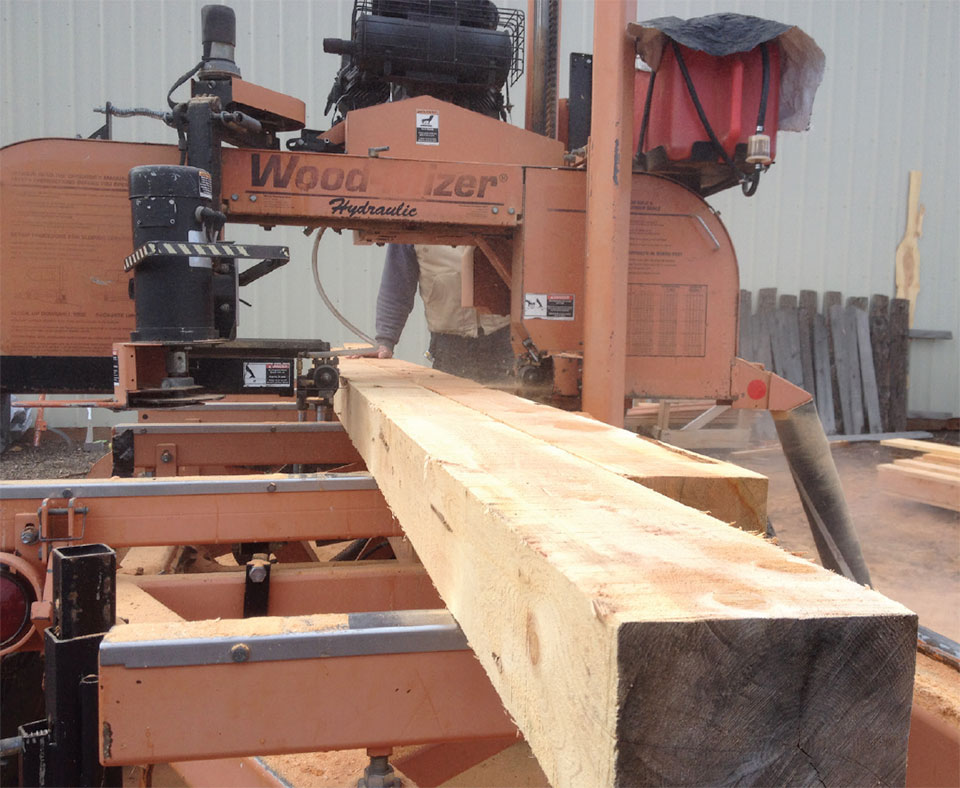
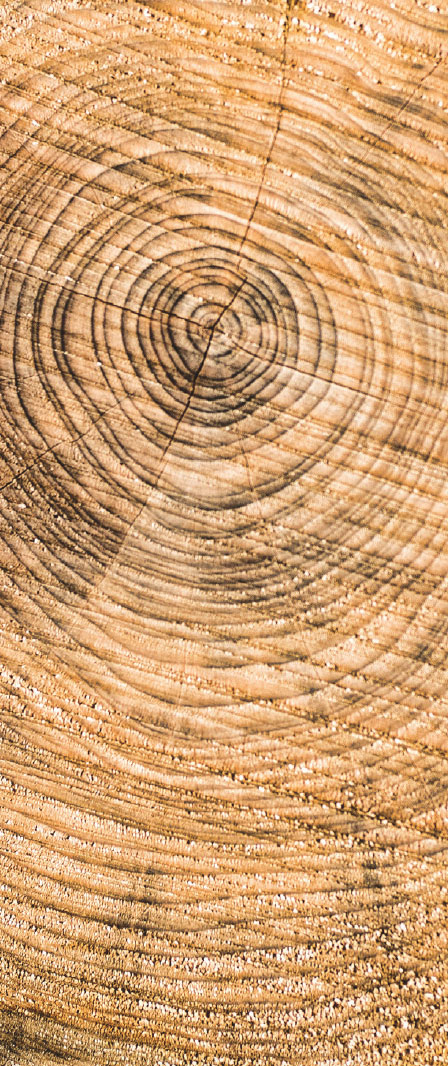
Sustainable Northwest Wood acknowledges wood’s crucial place in the carbon cycle. “Anything we can do to mitigate the impacts of carbon production needs consideration,” says Temple. “Sustained forest management that’s focused on maintaining healthy and vibrant ecosystems can sequester up to 30% more carbon than a forest that is managed primarily for production purposes,” shares Temple. This proper management also reduces forest fire risk, keeping carbon in the forest rather than the atmosphere. “Using practices of rotation and retention—growing trees for a long time before removing them and never removing more than 50% of the trees—significantly reduces the risk of catastrophic wildfires, while allowing for sustainable production,” notes Temple. Fewer severe wildfires equates to less financial burden in fighting them, better air quality, less damage to homes and habitat, and more carbon that stays in the forests rather than getting released into the atmosphere.
“Sustained forest management that’s focused on maintaining healthy and vibrant ecosystems can sequester up to 30% more carbon than a forest that is managed primarily for production purposes.”
–Ryan Temple, President, Sustainable Northwest Wood
Restoration Juniper
Healthy forest management also improves the ecosystem health of the region, as perfectly articulated through the firm’s Restoration Juniper project. “The Juniper tree evolved in well-drained soil, adapting to drinking up water quickly. Now that its habitat has changed, its drinking habits haven’t; it can extract as much as 50 gallons of water a day from the soil, causing riparian areas and springs to dry up,” shares Temple. Removing Juniper from places where it has become invasive offers an immediate bounce-back in the ecosystem. “We’re seeing springs come back that haven’t run for decades and native grasses re-vegetating. This affects everything from the micro habitat all the way to farmers, ranchers, and salmon population,” notes Temple.
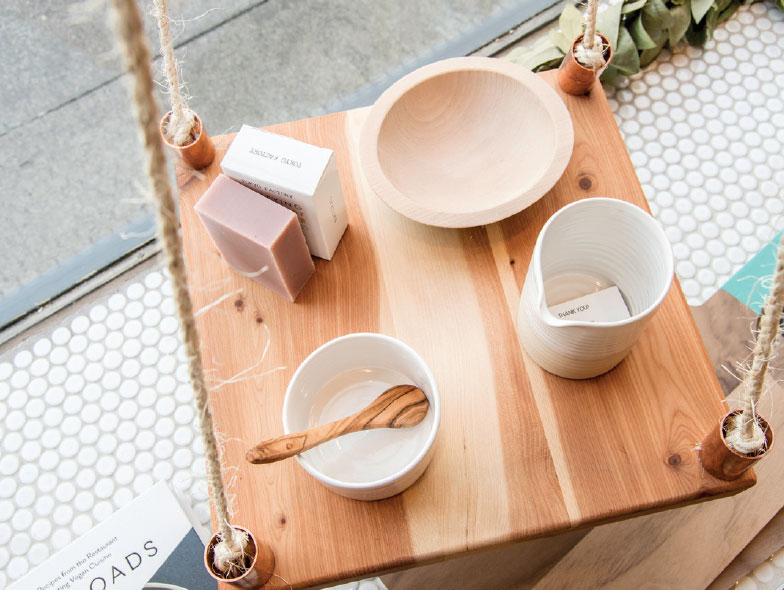
Temple shares the Juniper species’ backstory in the Pacific Northwest. “There are misconceptions that Juniper isn’t a native tree to Oregon; to the contrary, it is an endemic species and some individual trees are nearly 1,000 years old. Pre-settlement, in the 1850s, there were one million acres of Juniper; now there are ten million,” references Temple. Juniper trees thrived in the high rock outcroppings due to their water-drinking capacity. In the lowlands, naturally occurring fires would kill Juniper seedlings, but the native grasses would quickly recover. When humans started putting out fires, these seedlings that previously died naturally now continue to grow, enjoying the abundance of water at lower elevations. Growing now at rates much greater than its evolutionary development, the Juniper contributes to water table depletion, soil erosion, and habitat loss. By marketing Juniper as a viable home building product, Sustainable Northwest Wood has initiated an opportunity that is a win for everyone involved. “We’re in a unique situation where all parties involved agree that the Juniper needs to be brought back into balance. Prior to us creating a retail market for Juniper, restoration projects included removing the Juniper and burning it, which was wasteful environmentally and financially,” notes Temple.
“There are misconceptions that Juniper isn’t a native tree to Oregon; to the contrary, it is an endemic
species and some individual trees are nearly 1,000 years old.”
–Ryan Temple, President, Sustainable Northwest Wood

Extremely rot-resistant, ranchers have used Juniper for fence poles for decades. Builders keyed into this and discovered its breadth of possibility in both durability and beauty. “Juniper comes from the same family as Cedar and Redwood, containing oils and tannins, but is denser, more rot-resistant, and more readily available in our region, not to mention that harvesting it is actually restoring ecosystems,” notes Temple. Juniper performs incredibly well in outdoor application—decking, siding, landscaping, orchard and vineyard applications—without falling back on the chemicals prevalent in pressure-treated wood. “While some companies use chemicals like copper azole on wood to create longevity, we get that out of Juniper naturally,” exudes Temple. Juniper also offers a beautiful choice for flooring, countertops, and interior paneling. “This all-natural product that’s from the region’s sustainably managed ecosystems has a uniquely beautiful look; it tells the story of where it came from,” adds Temple.
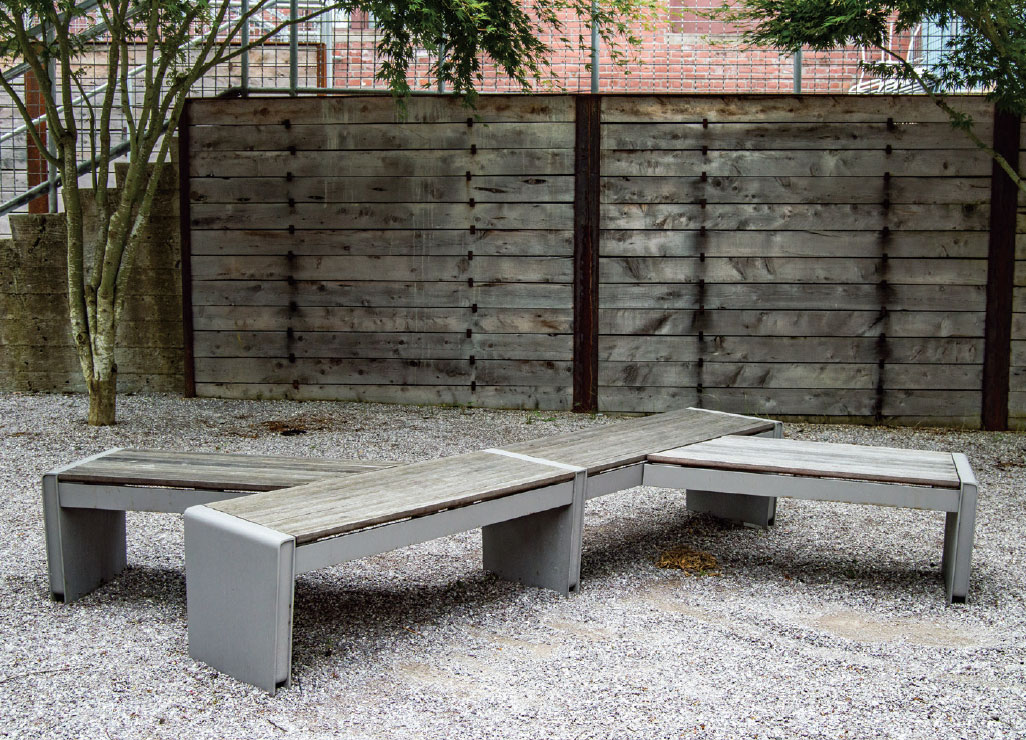
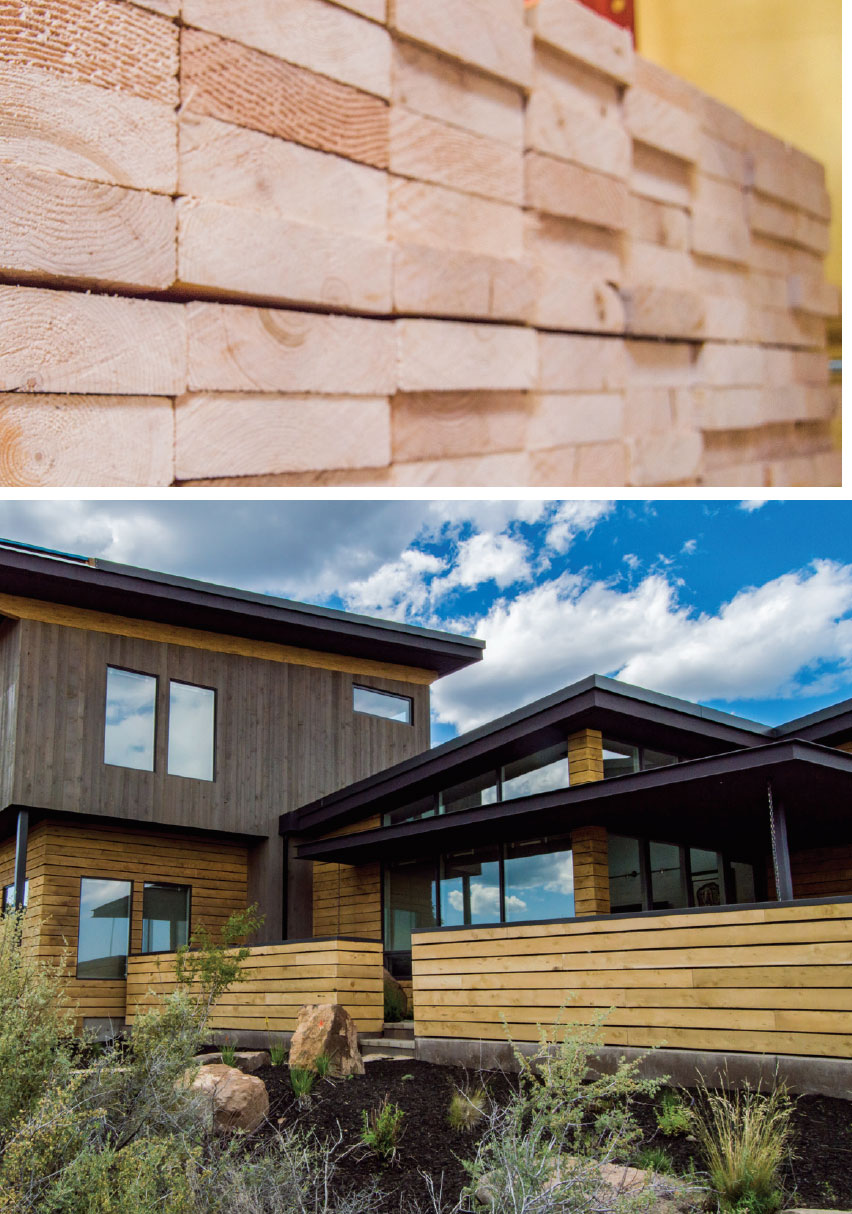
“Our customers ask, ‘Will this be a product I love, and a price I can afford?’ The answer is a resounding ‘yes.’ There’s a misconception that doing the ‘right’ thing is too costly and too difficult. We make the good choice
the easy choice.”
–Ryan Temple, President, Sustainable Northwest Wood
Juniper is just one of many sustainably sourced products that Sustainable Northwest Wood carries, but its story suggests the positive power of market demand. In supporting Juniper’s myriad uses, Sustainable Northwest Wood not only offers their clients a beautiful, practical product, but has provided for the growth of an industry supply chain that supports the ecosystem and economy. And this all begins with a happy customer. Temple shares, “Our customers ask, ‘Will this be a product I love, and a price I can afford?’ The answer is a resounding ‘yes.’ There’s a misconception that doing the ‘right’ thing is too costly and too difficult. We make the good choice the easy choice.” Sustainable Northwest Wood has created a business model that brings beautiful products to their clients, and supports the entire network that makes it possible. In sourcing wood from Sustainable Northwest Wood, customers can rest assured that they’ve invested in beautiful products that also contribute to the ecosystems supporting their lives for generations to come.
Energy Conservation Insulation
Conscientious Inside and Out
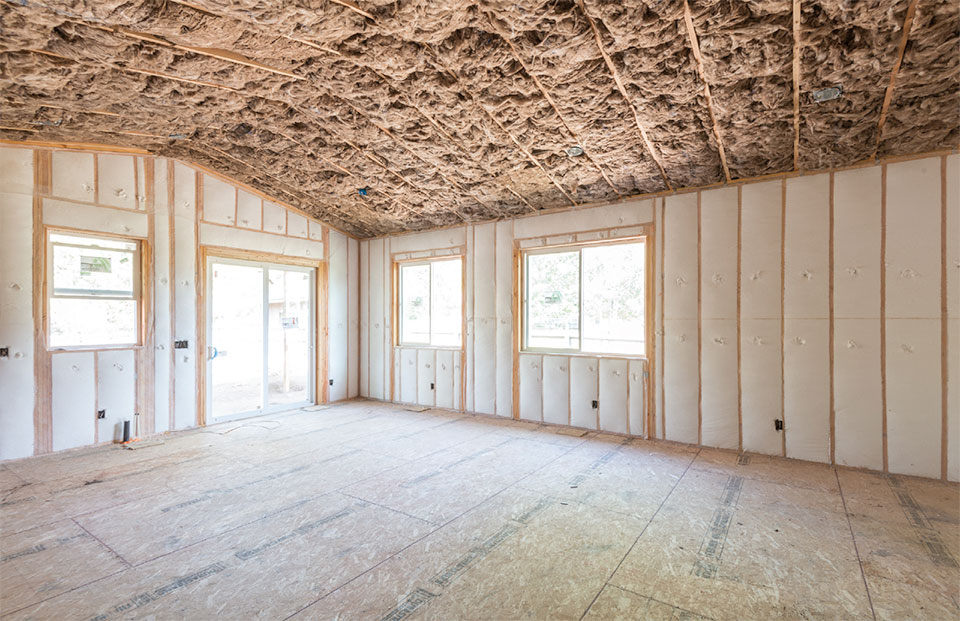
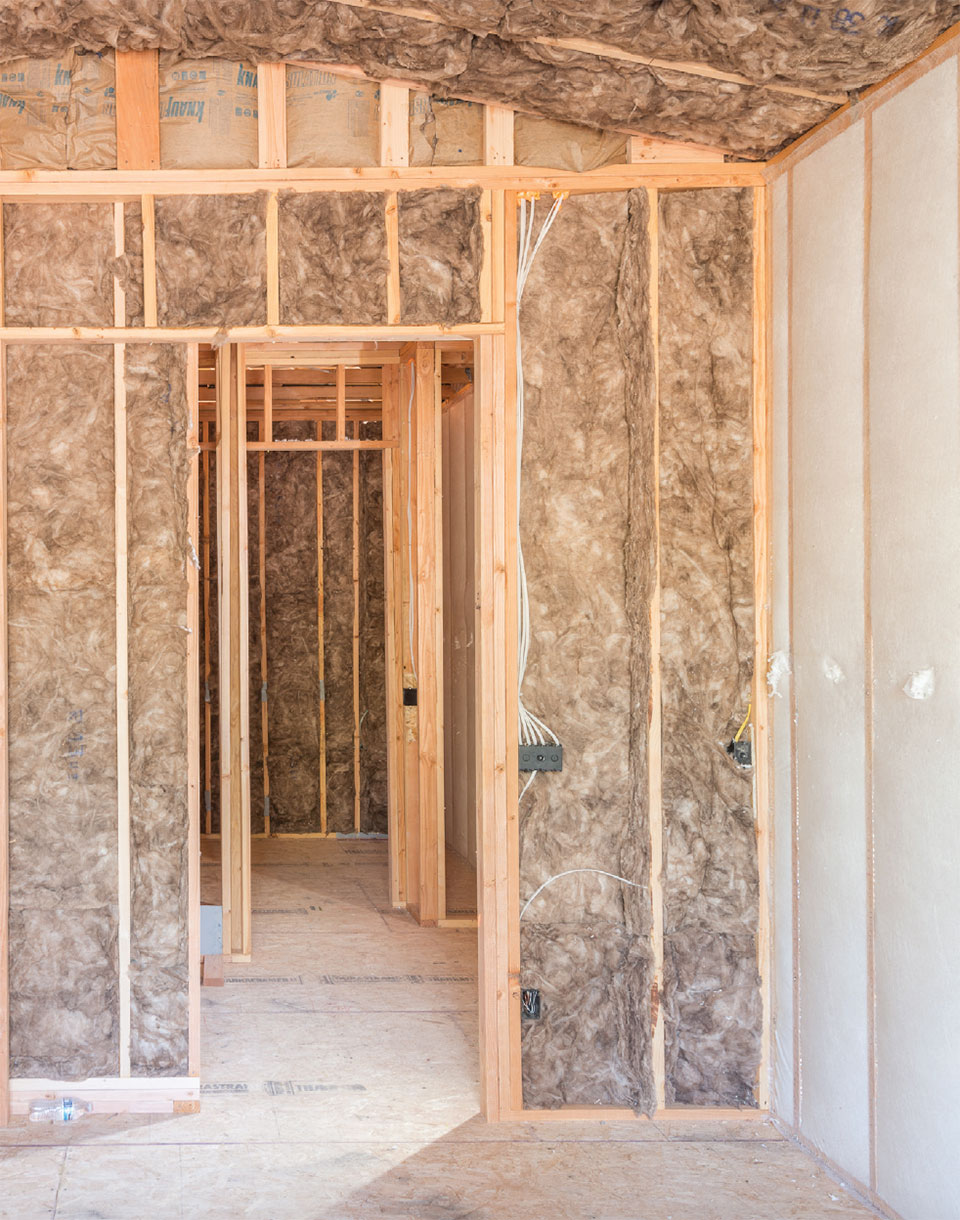
Today’s technology in insulation allows the conversation to move away from mere cost and code to the customer, and how they specifically want to feel in their home. Energy Conservation Insulation (ECI) emphasizes the quality and health of insulating products, with their customers’ value at the center of all decision making. As a full line insulation company, ECI is also the only insulating contractor in Oregon that holds a Sustainable Home Builders certificate. Will Lebeda, Owner of ECI, shares the story of ECI’s inception. “When we got started, a lot of insulation companies were solely worried about cheap pricing and fast installations. I’ve always believed that if you use healthy products and install with best practices, the end result performs at a higher level, and is far healthier for the people living in the home,” shares Lebeda. In the long run, the investment in healthier materials pays for itself, too. An efficiently insulated home costs less to heat and cool, makes the home more comfortable to live in, and, by using environmentally conscious materials, improves the longevity of both the home and the people who live there.
ECI begins each of their projects with their clients’ particular goals and concerns. Doug Frey, Manager at ECI, shares some specifics. “For example, when clients have allergies, we look at using cotton insulation instead of fiberglass batts,” notes Frey. When choosing materials in an industry that’s known for health concerns, ECI deliberately chooses the brands they build their business around, while sourcing products to meet any need. “We offer unique products that aren’t available with other companies. We work with anything from sheep’s wool to standard fiberglass to achieve our clients’ goals,” adds Frey. Seeking healthy insulation doesn’t mean renouncing familiar products. ECI uses variations of fiberglass and spray foam to mitigate hazards. “When we use fiberglass, we use a product that has 50% less fiberglass dust, and is always formaldehyde-free. When we choose spray foam products, we choose BASF foam, a consistent product that also surpasses the less-healthy polyurethane options,” notes Lebeda.
“We offer unique products that aren’t available with other companies. We work with anything from sheep’s wool to standard fiberglass to achieve our clients’ goals.”
–Doug Frey, Manager, Energy Conservation Insulation
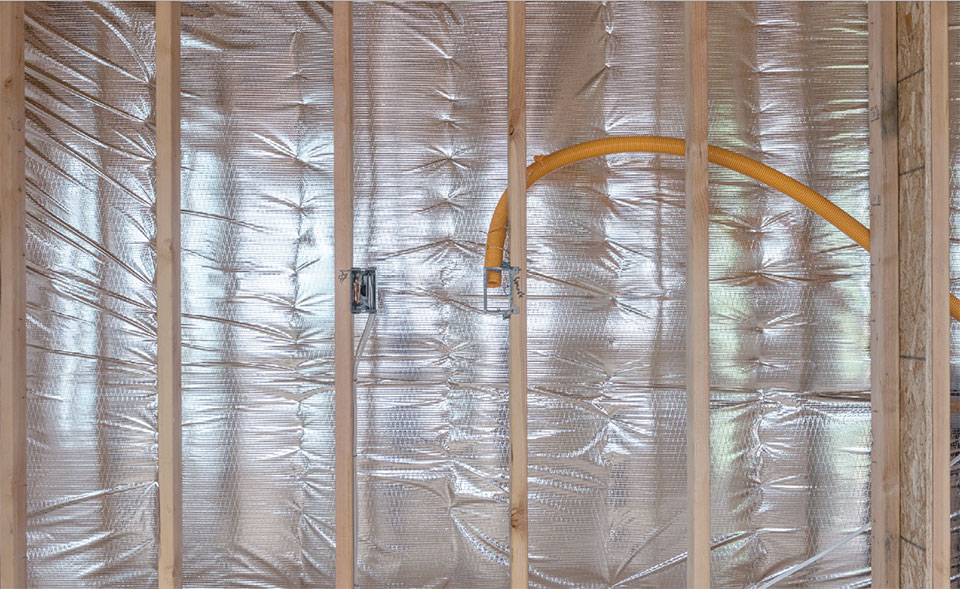
With the materials and technologies well developed at this point, ECI places their efforts in always trying to figure out how to make a home more air-tight, which in turn is healthier and more cost-effective. “By having many different certifications, as well as attending courses and conferences, we’ve learned practices that allow us to surpass code and increase the efficiency of the home,” shares Lebeda. Good performance comes from the synergy of many systems and the communication that happens between contractors in this process ultimately dictates the long-term health of the home. “Techniques to air seal homes are at the mercy of the home’s framing; likewise, the mechanical ventilation needs to be adequate for the insulation system we’ve installed. We place a huge emphasis on communication and education to support the flow between us and other contractors in this process,” adds Frey. ECI recognizes that a tight home is only as efficient as the ventilation provides for, so investing in this education and communication is at the center of their work.
ECI’s dedication to understanding their products inside and out offers them the opportunity to be a resource to builders. Having ECI on board can ensure that the home is built to the climate zone and the specific challenges of the Pacific Northwest climate. “Bend is one of the fastest growing communities in the nation. A lot of builders are coming in from out of the area, where they don’t have the same heating and cooling cycles as the high desert. The techniques they’re accustomed to aren’t suited to this area. We’re in a unique position to educate builders and work together on practices to customize the home for its location,” shares Frey. ECI’s knowledge of both insulation and its context in the home and the local environment gives them a unique perspective that is aptly suited to producing high-performing homes in this region.
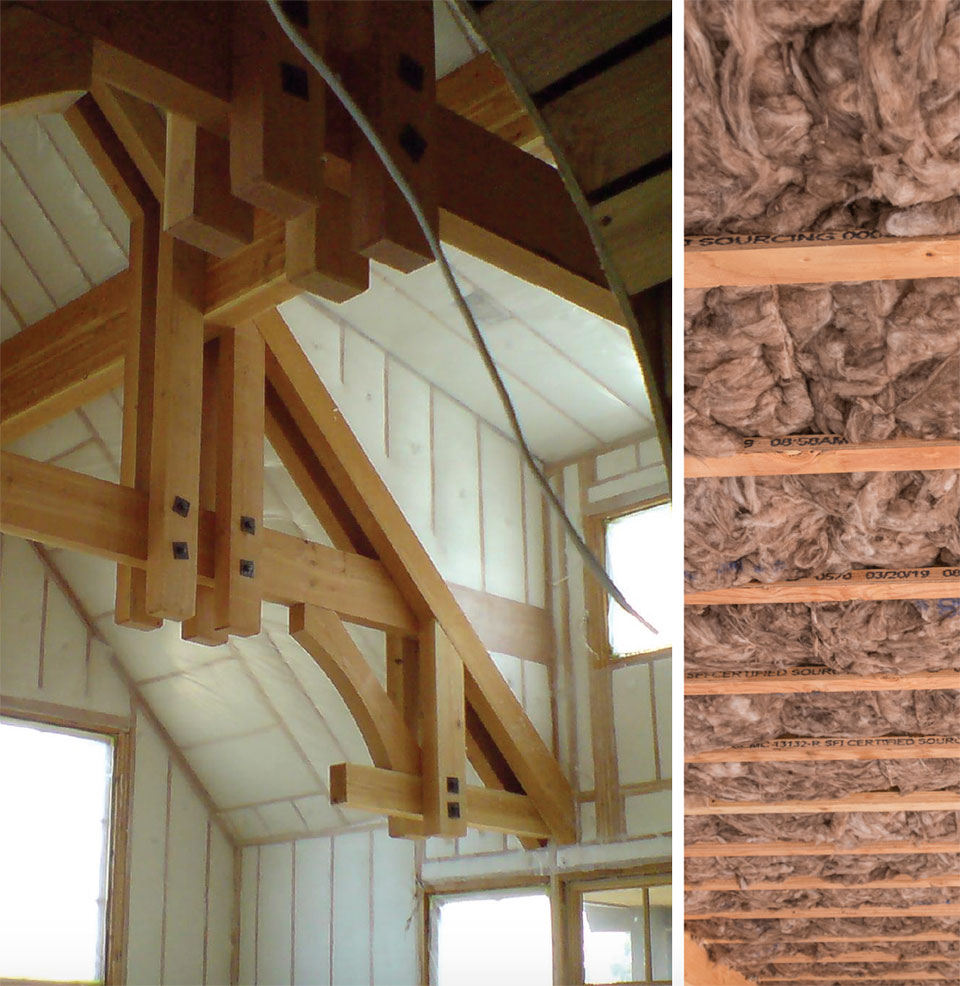
“Bend is one of the fastest growing communities in the nation. A lot of builders are coming in from out of the area, where they don’t have the same heating and cooling cycles as the high desert. The techniques they’re accustomed to aren’t suited to this area. We’re in a unique position to educate builders and work together on practices to customize the home for its location.”
–Will Lebeda, Owner, Energy Conservation Insulation
ECI is also a Third Party Verifier for energy score certifications, so even if they’re not specifically insulating a home, they take pride in supporting clients’ energy goals. This involves working on anything from early design assistance to working with framers and other insulation contractors. “This is a huge resource to our clients. We can sit down prior to the start of a construction project and make sure that everything is considered to build a more efficient home, so that everything inside the home is supporting each other,” adds Frey.
“You don’t get to touch, feel, or marvel at its excellence, but in insulating a home conscientiously, you make a finely oiled machine where all the systems work together really well. Insulation is one of the best investments
you can make.”
–Will Lebeda, Owner, Energy Conservation Insulation
Sound insulation and healthy “breathing” in a home is not readily visible, but its impact on the longevity of the home, long-term financial costs, and environmental burden, not to mention personal health, is more significant than many of the details that can be seen. “You don’t get to touch, feel, or marvel at its excellence, but in insulating a home conscientiously, you make a finely oiled machine where all the systems work together really well. Insulation is one of the best investments you can make,” shares Lebeda. Through a dedication to healthy products for the user and the environment, ECI contributes to homes that surpass industry standards and remain healthy and efficient for the many years to come.
Dream Home Building & Design
In a League of Its Own
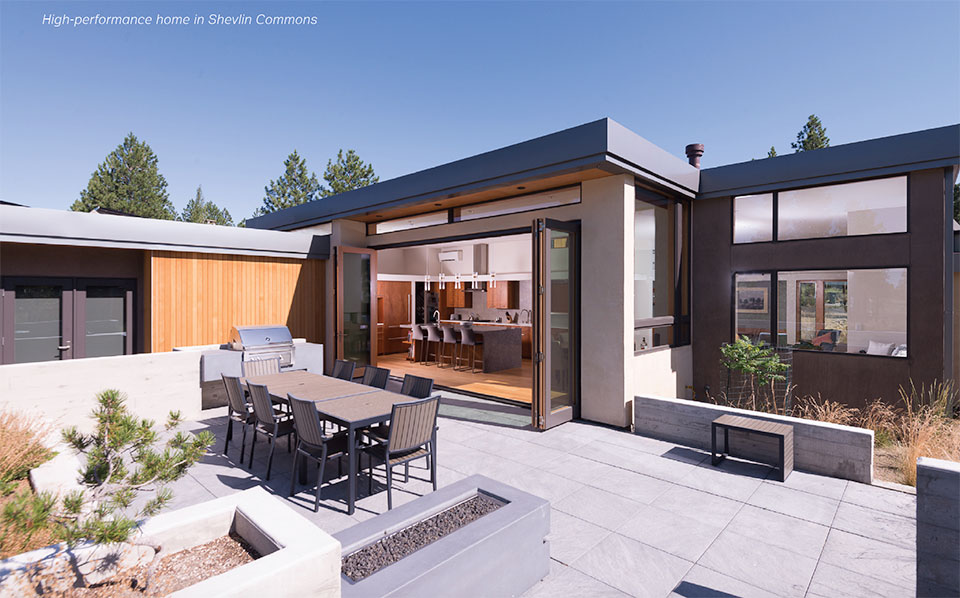
As a design-builder, Mike Ardeljan, the founder of Dream Home Building and Design, approaches the homebuilding process with a contagious sense of enthusiasm. He was born and bred of the building industry, and in his mission to build good homes, he consistently produces structures that surpass all standards of performance. All of Ardeljan’s homes are net-zero ready, not because he’s shooting for certain external benchmarks, but because the values that he feels are intrinsic to the building process naturally meet exceptional markers.
Building is in Ardeljan’s bones. “I’m a third-generation builder. I spent my summers and weekends on job sites growing up. When I was asked in 7th grade what kind of construction I wanted to go into, and I immediately gravitated to design,” recalls Ardeljan. “After high school, I was drawn to interior design, to the idea of designing a project from the inside out. Helping someone to shape the space they live in really resonated with me,” he continues. Due to the poor economy when he graduated with his design degree, Ardeljan got into the trades, working construction while adding in design work here and there. In 1998, he started Dream Home Designs, a residential design business in southern California. He moved to Bend in 2005, where green building piqued his interest as he worked for another builder, leading him to open his own building business, Dream Home Building and Design, in 2010. By having his contractor’s license as well as extensive experience in architectural design, Ardeljan can ensure that his clients get to work with the same person who designs their homes as the person who builds them.
“I see high-performance building, such as Passive House certification, akin to the racing division in car manufac-turing. Learning about the top end helps me think of new things to apply to my more mainstream projects.”
–Mike Ardeljan, Founder, Dream Home Building and Design
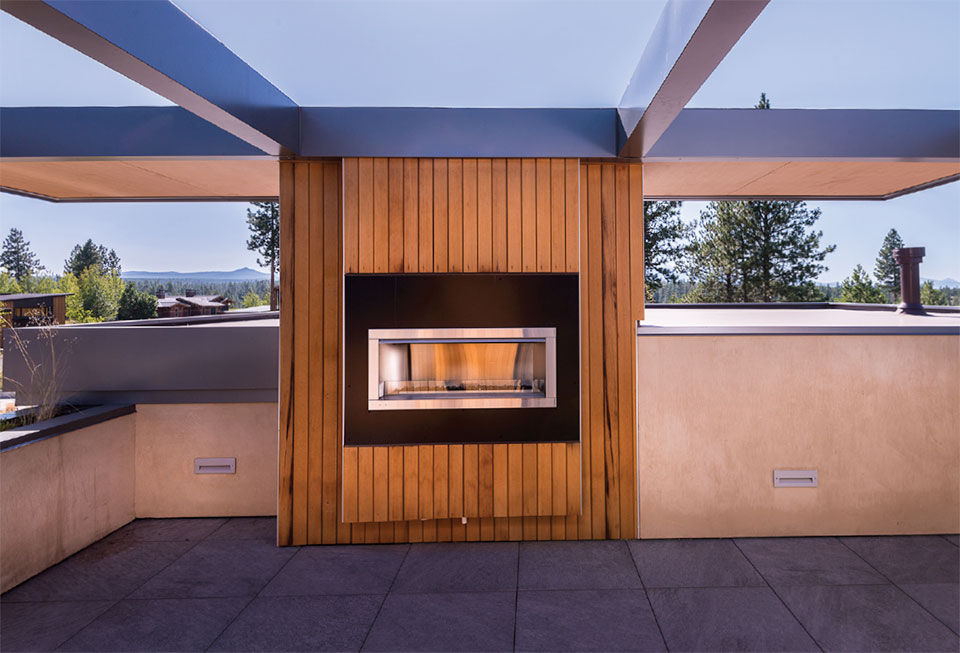
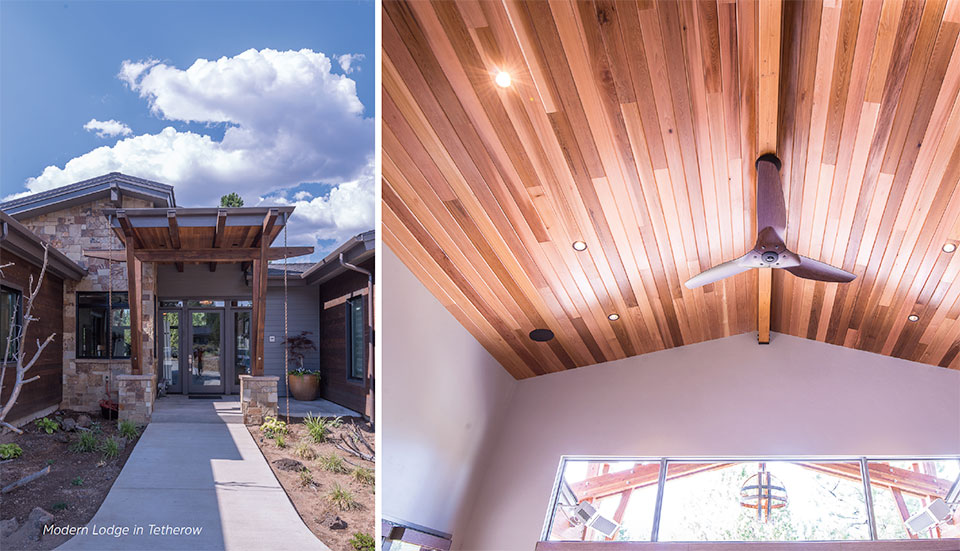
Ardeljan’s focus on green building slowly began to include high-performance building as he delved into the minutiae of building science. “I geek out on vapor control, air control, thermal issues,” shares Ardeljan. A lifelong learner, he continues to satisfy this inquisitiveness as he constantly improves his practices. “I love going to geeky conferences. I see high-performance building, such as Passive House certification, akin to the racing division in car manufacturing. Learning about the top end helps me think of new things to apply to my more mainstream projects,” adds Ardeljan.
With mandatory quality checkpoints he has set for himself, each of Ardeljan’s homes naturally surpasses standard building codes. “Code changes every three years, so in a new home, in three years you could be out of code. That’s where I got into high performance, focusing on the elements that sustain a home for good,” shares Ardeljan. The standard building envelope he likes to work with is cost-effective and environmentally conscious. He shares some of the details, saying, “I like to use EPS foam (as opposed to the toxic XPS foam that is prevalent) and cellulose on the interior insulation. Cellulose is a vapor-open material, so rather than trying to stop vapor, which might be close to impossible, I let the building assembly support what it’s going to do and help vapor leave,” explains Ardeljan. Cellulose insulation has myriad benefits, and with moisture storage capability, it is safer for preventing moisture and mold in the walls. “I also build a conditioned attic instead of a vented attic. This means that the thermal envelope is in the roof, instead of the ceiling, allowing for an air-tight environment that prevents ice damming on the roof,” adds Ardeljan. Additionally, all Dream Home Building and Design’s projects surpass Passive House air tightness standards by employing AeroBarrier technology. In using ERV mechanization on all projects in conjunction with a tight air seal, the home can breathe efficiently, which is especially important for overall health in regions with prevalent forest fires and high pollen seasons.
Dream Home Building and Design is not limited to projects that Ardeljan designs and builds himself; he works frequently with other contractors and architects. He sees it as an asset to get to work through all aspects of a project, but brings those communication skills regardless of whether he’s designing, building, or both. “When it’s the same person designing and building a home, you solve so many potential errors that can flood job sites: communication issues, power struggles, mix-ups. So when I do collaborate with other designers and builders, I get involved early in the process to minimize any potential challenges,” shares Ardeljan.
Ardeljan enjoys applying his deep and ever-growing knowledge of design and building science and practices to each of his client’s unique interests. “It keeps me motivated to look at things differently. I know I could make more money being a production builder, but I’m more interested in building homes that will last a long time, and are healthy for the people who live in them,” notes Ardeljan. This devotion to the values he believes in helps develop strong bonds with his clients that last as long as the homes he builds.
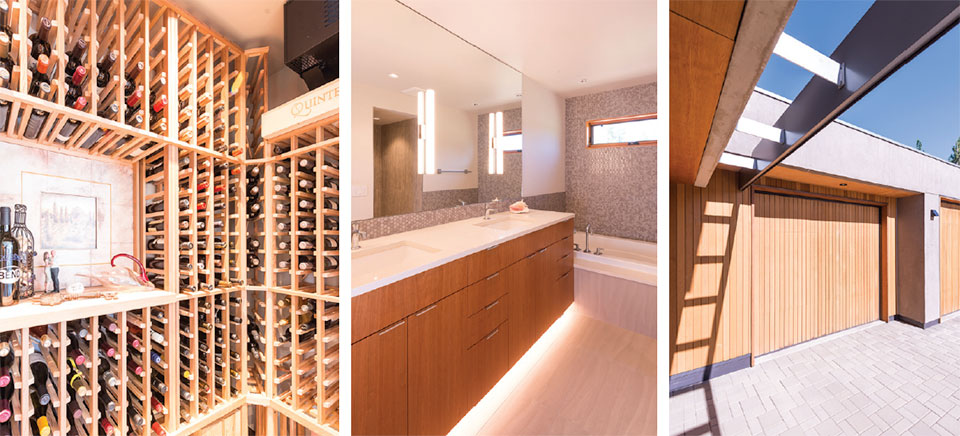
“A project is like a marriage, the most important part is how you get along when there’s a problem. I treat people fairly, and we work through issues, and that’s why my clients are happy.”
–Mike Ardeljan, Founder, Dream Home Building and Design
Ardeljan sees it as a privilege to be involved in designing someone’s home. “A lot of people never get that opportunity, to design and build their own home. I think it’s so cool to get to be a part of that,” shares Ardeljan. He looks at that relationship as a commitment, emphasizing an approach to work through issues as they come, as integral to the success of the project. “A project is like a marriage, the most important part is how you get along when there’s a problem. I treat people fairly, and we work through issues, and that’s why my clients are happy,” Ardeljan adds.
Ardeljan’s dedication to the process is proven time and time again in the lifelong friendships he develops with his clients. “I find it so fulfilling when I become friends with my clients, and years down the road I can have dinner in their homes, and learn about what worked and what didn’t, to remember how we talked about how the space might be, and see how that turned out,” shares Ardeljan. This inquisitive commitment to integrity through every step of the process offers the foundation for everything about the home to flourish: how it performs, how it functions, all in a conscientious way. Ardeljan’s background in design and building offers him the skill set to exceed standards and expectations, delivering a true Dream Home every time.
